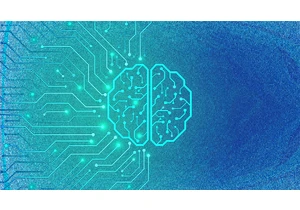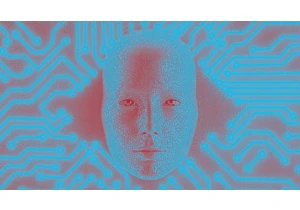The Fast Company Impact Council is a private membership community of influential leaders, experts, executives, and entrepreneurs who share their insights with our audience. Members pay annual membership dues for access to peer learning and thought leadership opportunities, events and more.
Most ordinary people know little about the calculus, statistics, linear algebra, logic, and programming languages required to design projects and products to leverage artificial intelligence.
However, we are not exempt from using products and services that rely on AI. If we do not learn how to maximize these tools, our organizations—businesses, schools, and governments—will have less ability to generate income and a lower quality of life compared to those who do.
What is most unsettling is the general lack of knowledge about logic, mathematics, and grammatical syntax that may affect AI’s creation and usage.
Set theory
Consider set theory in mathematics, introduced indirectly in elementary school. Basic concepts like classification, grouping, and counting objects, form its foundation.
During middle school, students learn set definitions, notation, and representations (listing elements, Venn diagrams), set operations (union, intersection, difference, and complements), and relationships between sets (subsets, empty sets, disjointed sets, universal sets).
By high school, students face set theory with greater complexity. Applications are presented in discrete mathematics, relationships between sets and probabilities, numerical sets and related algebraic operations, and advanced concepts to introduce mathematical logic.
You might be wondering where this is going.
Logical reasoning
Set theory feeds into logic: the science and art of reasoning correctly. Logic studies the principles of valid thought, structuring rules and methods that help evaluate the consistency and validity of arguments, deductions, and propositions.
Modern mathematics is built on set theory, itself a logical system. Logic provides the structure and principles underpinning mathematical reasoning. Concepts such as implication, equivalence, negation, and quantification are fundamental logical tools used in mathematics.
Logical reasoning uses symbols and formulas to represent propositions and inferences. It is essential for solving mathematical problems. In mathematics, logic explores topics like set theory and computability theory.
We’re circling back to the topic again.
Logic helps children (and adults) break problems into smaller, more manageable parts and tackle them systematically. When solving a puzzle, logical reasoning helps them identify patterns, rules, or constraints. Chess, Sudoku, mazes, and building blocks simultaneously develop logical thinking and problem-solving skills. In math and science, solving problems logically is intrinsic to solving equations, understanding patterns, and conducting experiments.
Grammar
And what about grammar? Although the proposition might seem counterintuitive, grammatical syntax has a direct relationship with mathematics, particularly set theory and logic.
In traditional grammar, syntax refers to the set of rules dictating how words and phrases are organized to form sentences. Grammatical classes (nouns, verbs, adjectives) combine according to rules, and sentences have hierarchical structures (clauses, phrases). Syntax rules determine whether a sentence is grammatically correct, and in linguistic analysis (parsing), understanding sentences involves breaking them into parts.
Noam Chomsky’s generative grammar theory describes the implicit rules and principles underlying natural language structure. It demonstrates how sentences are generated from a finite set of rules to create infinite possible expressions in a language.
Programming languages also have syntax—rules determining the correct structure of commands and expressions. Code elements (variables, functions, loops) combine using the specific rules of the language to form programs, which also have hierarchical structures (functions, blocks, modules). Like linguistic analysis, compilers and interpreters analyze code by breaking it into tokens (parts) and examining its structure.
Algorithms and AI
You might think this article was supposed to be about using artificial intelligence, not creating computational models. And you’re right.
One important concept for using AI’s capabilities is the notion of intervals. Defining intervals enable users to separate, structure, search, and manipulate information in databases or directly within documents.
This concept, widely used in set theory, is fundamental to logic, and connects logic to computer science, artificial intelligence, and dynamic systems. It also plays a critical role in syntax, particularly in structural analysis, grammatical hierarchy, and even natural language processing.
Ultimately, mathematics, logic, and grammatical syntax are fundamental to structuring algorithms.
It’s worth emphasizing the classical definition of an algorithm, originating in the 9th century: a finite set of well-defined, step-by-step instructions for completing a task or solving a problem.
Develop natural algorithms
The brain has specialized areas for numerical and logical processing (parietal lobe) and specific regions dedicated to grammar and syntax (Broca’s and Wernicke’s areas).
These regions integrate their functions to create dynamic problem-solving strategies that mimic algorithmic thinking, unconsciously generating “natural algorithms” to tackle everyday challenges, such as planning a route or making decisions based on available data, evaluating options, and predicting outcomes.
The correlation between mathematics, grammar, and the brain’s ability to create natural algorithms for solving daily problems reveals a shared reliance on structured logical thinking and generative creativity.
This interconnectedness highlights the brain’s remarkable ability to abstract rules, recognize patterns, and develop natural algorithms to navigate the complexities of daily life.
A logical proposition is that our young people must be well-versed in fundamental mathematics and written language proficiency for a single purpose: to train their cognitive engines to develop natural algorithms, and then artificial ones, which increasingly mimic the human brain.
This way they can keep up with the times, which are being radically reshaped by humanity’s computational capabilities.
For parents, a logical takeaway is the idea of increasing their children’s instructional time in this cognitive set.
What skills are most important?
Calibrating the educational curriculum and workload has been a persistent challenge for educators. The current technological revolution makes this challenge even more pronounced. What is the correct workload for each subject to keep young people in step with evolution? Will mathematics, logic, and grammar gain more importance than subjects like history, geography, or chemistry?
A realistic perspective considers these skills as foundational as others, which are also taught in knowledge blocks—lessons, sections, chapters, numbered exercises, and, ultimately, structured intervals. Indeed, this structure is what students use globally, with tools like Google and now ChatGPT to support their studies (in best-case scenario).
Value creation
We are not looking for passive users if we aim for a better world. Technologies based on set theory, grammar, and logic were the foundation for social media and other revolutionary applications in recent years. Billions around the world improved their cultural awareness and their daily life, but we can’t exactly say that these applications created value for all of them.
The common usability of AI, such as addressing everyday inquiries, solving household essentials, drafting texts, creating videos, or using preset tools in the workplace, will certainly deliver significant benefits to the general population, much like its predecessor technologies did. However, this time, technology should go further by driving value creation that is more equally distributed, enhancing economic output for people around the world.
Rodrigo Magnago is the director of rere.eco.
Chcete-li přidat komentář, přihlaste se
Ostatní příspěvky v této skupině

Cryptocurrency exchange Bybit said last week hackers had stolen digital tokens worth around $1.5 billion, in what researchers called the biggest crypto heist of all time.
Bybit CEO Ben Z


Anthropic released on Monday its Claude 3.7 Sonnet model, which it says returns results faster and can show the user the “chain of thought” it follows to reach an answer. This latest model also po

This morning, Apple announced its largest spend commitment to da


In 2024, Amazon introduced its AI-powered HR ass

Lore isn’t just for games like The Elder Scrolls or films like The Lord of the Rings—online, it has evolved into something entirely new.
The Old English word made the s
